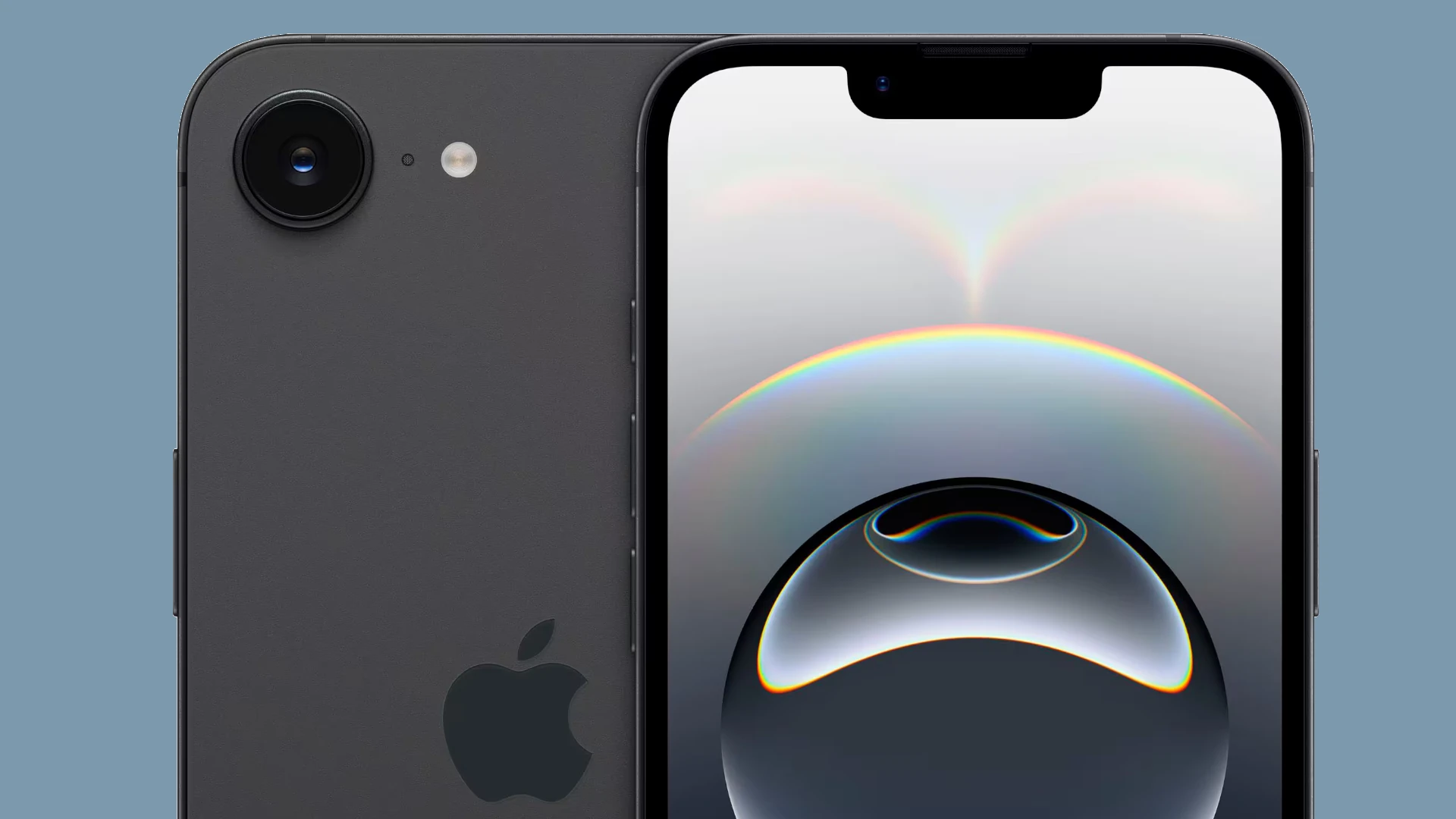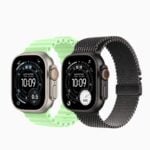Apple’s newest phone, the iPhone 16E, has joined the iPhone 16 lineup as an entry-level option. This budget-friendly model shares some key features with its siblings, but comes with a few trade-offs. The iPhone 16E matches the standard iPhone 16 with its 6.1-inch OLED display, Face ID, USB-C port, and A18 chip, but falls short in the camera department and lacks some premium features found in the Pro models.
When it comes to photography, the iPhone 16E isn’t quite as capable as the iPhone 16 or the Pro models. It doesn’t support macro photography or space photography with Apple Vision Pro, features that many iPhone fans have come to love. However, for basic picture-taking, it performs on par with earlier non-Pro iPhone models, making it a solid choice for casual users.
iPhone 16e vs the iPhone 16 Lineup: Key Differences
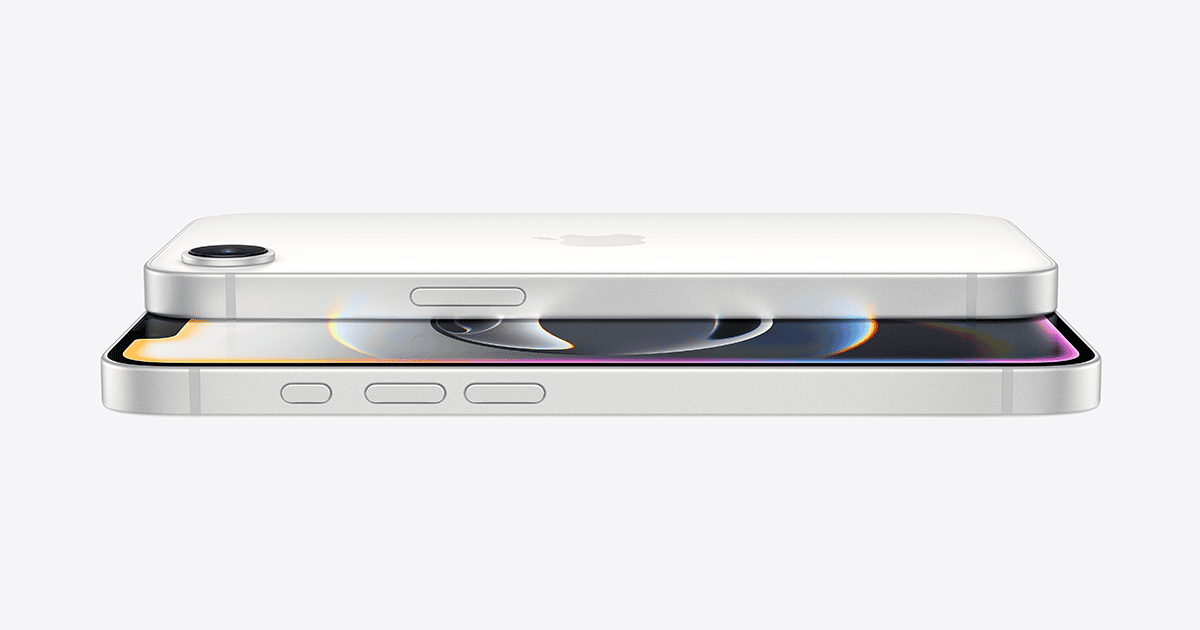
Apple introduced the iPhone 16e in February 2025 as a more accessible alternative to the flagship models in the iPhone 16 series. While it retains much of Apple’s design language and core functionality, there are some important differences when compared to its siblings: the iPhone 16, iPhone 16 Plus, iPhone 16 Pro, and iPhone 16 Pro Max.
Here’s a breakdown of how the iPhone 16e compares across major categories.
iPhone 16 Series Comparison Table
| Feature | iPhone 16e | iPhone 16 | iPhone 16 Plus | iPhone 16 Pro | iPhone 16 Pro Max |
|---|---|---|---|---|---|
| Display Size | 6.1-inch | 6.1-inch | 6.7-inch | 6.1-inch | 6.7-inch |
| Display Type | Super Retina XDR | Super Retina XDR | Super Retina XDR | ProMotion OLED | ProMotion OLED |
| Chipset | A18 | A18 | A18 | A18 Pro | A18 Pro |
| RAM | 6GB | 6GB | 6GB | 8GB | 8GB |
| Camera System | Single 48MP Rear | Dual 48MP + 12MP | Dual 48MP + 12MP | Triple 48MP + Telephoto | Triple 48MP + Telephoto |
| Front Camera | 12MP | 12MP | 12MP | 12MP TrueDepth | 12MP TrueDepth |
| Battery Life | Up to 18 hours | Up to 20 hours | Up to 26 hours | Up to 22 hours | Up to 29 hours |
| Storage Options | 128GB, 256GB | 128GB – 512GB | 128GB – 512GB | 128GB – 1TB | 256GB – 1TB |
| Frame Material | Aluminum | Aluminum | Aluminum | Titanium | Titanium |
| Face ID + Dynamic Island | Yes | Yes | Yes | Yes | Yes |
| Apple Intelligence | Yes | Yes | Yes | Yes | Yes |
| Starting Price (USD) | $599 | $699 | $799 | $999 | $1,199 |
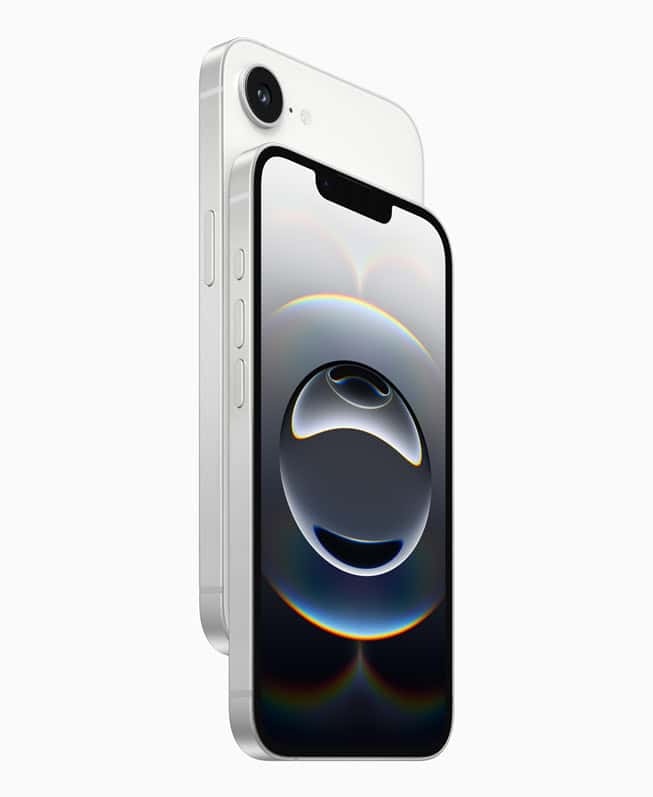
Performance & Chip
The iPhone 16e is powered by the same A18 chip found in the base iPhone 16 and 16 Plus models. This means users can expect nearly identical day-to-day performance for most apps and tasks. However, it does lack the A18 Pro chip found in the Pro models, which offers higher GPU performance, faster Neural Engine capabilities, and advanced rendering features for gaming and creative apps.
If you don’t need the bleeding-edge speed of the Pro series, the A18 in the 16e is more than capable.
Display and Design
Despite sharing the same 6.1-inch screen size as the standard iPhone 16, the 16e omits the ProMotion refresh rate (120Hz), sticking with 60Hz instead. This may be noticeable to users coming from a Pro model, especially when scrolling or gaming. The bezels on the 16e are also slightly thicker, and the frame is aluminum rather than titanium.
The matte black and white finishes give it a clean, minimalist look, but color options are more limited compared to the rest of the line.
Camera Differences
The 16e takes a different approach by offering a single 48MP main camera without the secondary ultrawide or telephoto sensors. It still supports features like Smart HDR 5, Deep Fusion, and Night Mode, but lacks some of the advanced photo and video capabilities of its higher-end siblings—such as 4K ProRes recording or 5x optical zoom.
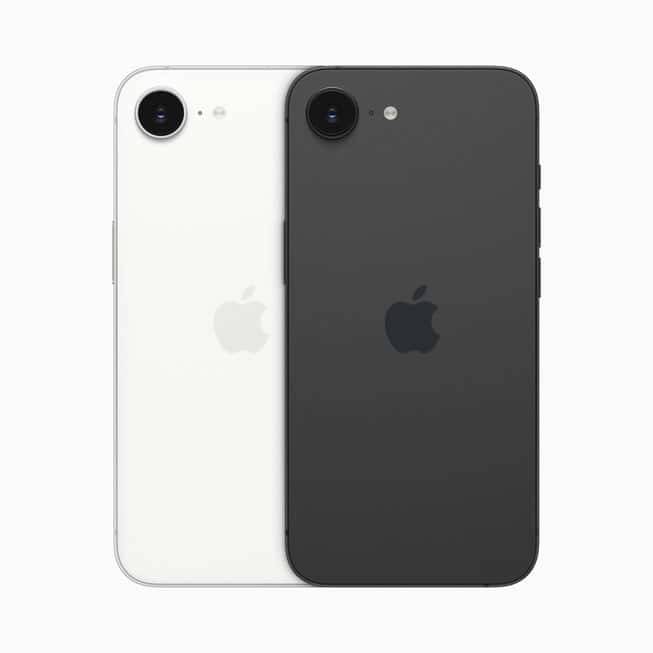
Here’s a look at what each model offers in terms of cameras:
| Model | Main Camera | Ultrawide | Telephoto | Night Mode | Macro Mode | ProRAW / ProRes |
|---|---|---|---|---|---|---|
| iPhone 16e | 48MP | No | No | Yes | No | No |
| iPhone 16 | 48MP | Yes | No | Yes | No | No |
| iPhone 16 Pro | 48MP | Yes | Yes | Yes | Yes | Yes |
Battery Life
The iPhone 16e has a slightly smaller battery than other models. In testing, it supports up to 18 hours of video playback, compared to 20+ hours on the standard 16 and up to 29 hours on the Pro Max. It’s efficient but may not last as long during heavy use or extended gaming sessions.
Software and Intelligence
One of the standout aspects of the iPhone 16e is its full compatibility with Apple Intelligence features—despite being the lowest-cost model. This includes enhanced Siri capabilities, on-device AI for message summaries, smart photo editing, and productivity improvements across Mail and Safari. Apple didn’t hold back on these features even at the $599 price point.
Who Should Buy the iPhone 16e?
The 16e is best for users who want a modern iPhone experience—Dynamic Island, Face ID, excellent camera quality, and access to AI features—without breaking the bank. It’s a perfect fit for those upgrading from an iPhone XR, SE, or even an iPhone 11, especially if Pro-level photography or high refresh rate screens aren’t a priority.
For power users and content creators, the Pro models are still the best bet. But for everyone else, the iPhone 16e offers excellent value in a sleek, reliable package.
Key Takeaways
- The iPhone 16E offers the same A18 chip and 6.1-inch OLED screen as the iPhone 16 but at a lower price point.
- Camera quality on the 16E is decent but lacks the advanced photography features found in the rest of the iPhone 16 lineup.
- The 16E serves as the new entry-level option in the iPhone 16 series, replacing the previous SE model with a modern design.
Core Differences: iPhone 16e vs. the iPhone 16 Series
Apple’s iPhone 16e serves as the entry point to the iPhone 16 family, offering many premium features at a more accessible price point. The differences between models involve design elements, processing capabilities, camera systems, and battery technologies.
Design and Display Comparison
The iPhone 16e sports a 6.1-inch Super Retina XDR OLED display, matching the standard iPhone 16 in screen size. Both models feature Dynamic Island, removing the older notch design completely from Apple’s lineup.
However, the 16e sticks with a 60Hz refresh rate while the standard iPhone 16 offers a more fluid experience. This refresh rate difference becomes noticeable when scrolling through content or playing games.
Build materials also differ slightly. The 16e uses aluminum for its frame rather than the higher-grade materials found in pricier models. Color options remain diverse, giving buyers plenty of personalization choices.
The 16e maintains a respectable peak brightness output, making it usable outdoors, though it doesn’t reach the same maximum levels as the Pro models.
Performance: Chipset, Speed, and Efficiency
Both the iPhone 16e and iPhone 16 run on Apple’s A18 chip, showing Apple’s commitment to power across the lineup. However, the chip in the 16e features a four-core GPU compared to the five-core GPU in the standard iPhone 16.
RAM appears consistent at 8GB across both models, ensuring smooth multitasking and app performance. This memory boost over previous generations helps with Apple Intelligence features in iOS 18.
The performance differences only become apparent in intensive tasks like gaming or video editing. For everyday use—messaging, browsing, and social media—users will hardly notice any difference between the models.
Both phones offer exceptional efficiency, translating to solid battery life even with heavy usage patterns. The A18 chipset handles routine tasks without excessive power drain.
Camera System and Photographic Advancements
The camera setup marks a key difference between models. The iPhone 16e features a dual-camera system rather than the triple array found on Pro models. It includes a 48MP main camera, allowing for detailed shots in various lighting conditions.
Despite having fewer lenses, the 16e cleverly uses sensor cropping to achieve 2x magnification for zoomed photos, similar to the standard iPhone 16. This provides versatility without additional hardware.
The 12MP front-facing camera delivers solid selfies across all models in the lineup. Portrait mode works well on the 16e, though with slightly fewer adjustment options than Pro models.
Video capabilities remain impressive, with 4K recording available. While Pro models offer more advanced features like ProRAW and additional video formats, the 16e handles everyday video needs without issue.
Battery Life and Charging Features
Battery performance varies across the iPhone 16 lineup, with the 16e offering solid all-day usage for most users. The exact battery size is optimized for the device’s power needs and display requirements.
Charging capabilities show notable differences. The iPhone 16e supports standard 7.5W Qi wireless charging, while the iPhone 16 offers faster 15W Qi2 charging and MagSafe compatibility.
Both devices feature USB-C ports, finally standardizing Apple’s charging solution across the lineup. Wired charging speeds remain consistent, allowing for quick power-ups when needed.
Battery management features in iOS 18 help extend longevity across all models, with smart charging and usage optimization. The system learns user patterns to maximize battery health over time.
Exclusive Features, Software, and Future Trends
The iPhone 16e brings several key software innovations while maintaining compatibility with the broader iPhone ecosystem. Its unique position in the lineup offers both premium features and value-oriented benefits not seen in previous budget models.
Apple Intelligence, iOS Innovations, and User Tools
The iPhone 16e marks a significant shift as it features the A18 chip, making it the first budget iPhone to support Apple Intelligence. This gives users access to writing tools that help draft and edit text with suggested improvements.
Image Playground lets users create custom images using simple prompts. Visual Intelligence can identify objects when the camera is pointed at them, making everyday tasks easier.
The Clean Up tool fixes image imperfections, while Genmoji creates personalized emoji based on text descriptions. These tools work directly on the device rather than in the cloud.
iOS on the 16e includes notification summaries that group alerts by importance. Siri has been redesigned to understand context better and complete more complex tasks without internet connection.
Security, Controls, and Interface Enhancements
Face ID on the iPhone 16e works faster than on previous budget models like the iPhone SE. The system now recognizes users even when wearing masks or glasses.
The Action Button, first introduced on iPhone 15 Pro models, makes its way to the 16e. Users can customize this button to:
- Launch the camera
- Turn on the flashlight
- Open specific apps
- Trigger shortcuts
Touch response has been improved for smoother scrolling and typing. Privacy controls are more detailed, letting users see exactly which apps access their data.
Battery usage monitoring now shows which features drain power most quickly. This helps users adjust settings for longer battery life.
How iPhone 16e Aligns with Previous and Future Models
The iPhone 16e bridges the gap between older models like iPhone 12 and 13 and current flagships. It replaces the iPhone SE as Apple’s entry-level option while offering many premium features.
Unlike the iPhone 11 through 14 series, the 16e uses the latest chip architecture. This means it will likely receive software updates for 5-6 years, matching the support period of the main iPhone 16.
The iPhone 16e’s design language shares more with current models than with the outdated iPhone SE, making it feel modern despite its lower price point.
Looking ahead, the 16e establishes a pattern that future models will likely follow. The “e” branding may become a permanent part of Apple’s lineup, similar to how SE models were positioned for several years.
UK carrier EE has already announced special plans for the 16e, suggesting strong carrier support globally.
Frequently Asked Questions
The iPhone 16e differs from its siblings in several key areas including camera features, battery life, display technology, processor performance, storage options, and build materials.
What are the differences in camera capabilities between the iPhone 16e and other iPhone 16 models?
The iPhone 16e camera system is more basic compared to other iPhone 16 models. While functional, it lacks some advanced photography features.
The 16e doesn’t support macro photography or space photography with Apple Vision Pro, which are available on the standard iPhone 16.
According to experts, the iPhone 16e camera isn’t on par with the iPhone 16 Pro or even the standard iPhone 16, but it does match the quality of previous non-Pro iPhones from earlier generations.
Is there a variance in battery life between the iPhone 16e and its counterparts within the iPhone 16 lineup?
The iPhone 16e offers impressive battery performance despite being the entry-level model. Apple states the 16e can achieve up to 26 hours of video playback and 21 hours of streaming.
This battery life is competitive within the iPhone 16 lineup, suggesting Apple hasn’t compromised on power efficiency for the more affordable model.
How does the display technology of the iPhone 16e compare to that of the higher-end iPhone 16 versions?
The iPhone 16e display offers good quality but lacks some premium features found in higher-end models. Screen size and resolution differences are noticeable when compared side-by-side with other iPhone 16 variants.
The display technology uses similar fundamentals but may have differences in brightness levels, color accuracy, and refresh rates compared to the Pro models.
Can the iPhone 16e’s processor performance match that of the other devices in the iPhone 16 series?
The iPhone 16e uses a slightly different processor configuration than other iPhone 16 models. While built on similar architecture, it may have fewer cores or lower clock speeds.
Daily tasks run smoothly on the 16e, but users might notice performance differences when running demanding applications or games compared to the higher-end iPhone 16 models.
What are the storage options available for the iPhone 16e in contrast to the rest of the iPhone 16 range?
The iPhone 16e matches the standard iPhone 16 in storage options. Both models come in 128GB, 256GB and 512GB configurations.
This gives users the same storage flexibility as the standard model, though the Pro variants likely offer additional higher-capacity options.
How does the build quality and material finish of the iPhone 16e differ from the other iPhone 16 series smartphones?
The iPhone 16e features an aluminum and glass construction similar to the standard iPhone 16. The most visible difference is in the color selection between the models.
The 16e measures 5.78 by 2.82 by 0.31 inches and weighs 5.88 ounces, making it slightly smaller and lighter than the iPhone 16, which measures 5.81 inches in height.

